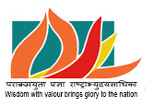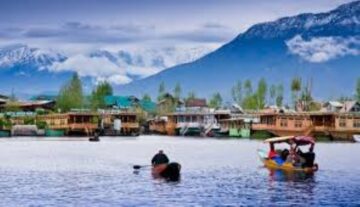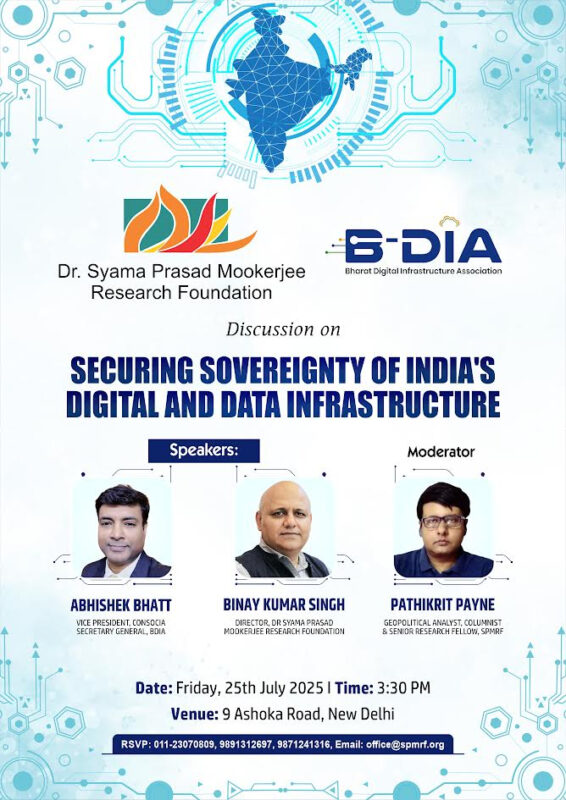In the grand narrative of India’s development, the story of Jammu and Kashmir stands out as a proof to what is possible when policy, perseverance, and people come together. It is a story still unfolding originating from history, but firmly focused on the future.
Over the past decade, Jammu and Kashmir has witnessed a remarkable transformation, one that has reshaped its infrastructure, boosted its economy, strengthened grassroots democracy, and opened new avenues for its youth. Guided by the vision of a stronger and more inclusive India, the government’s sustained efforts have brought visible change to a region once defined largely by its challenges. Ten years ago, parts of Jammu and Kashmir struggled with limited connectivity, uneven development, and gaps in governance. Today, the landscape has shifted dramatically. Modern highways, tunnels piercing through the mountains, expanded rail networks, and better air connectivity have not only made travel easier but have also strengthened trade and tourism. The completion of the Banihal-Qazigund tunnel and progress on the ambitious Udhampur-Srinagar-Baramulla rail link stand as symbols of how determined infrastructure development can unite communities and fuel economic activity.
Tourism, long regarded as the soul of Kashmir’s economy, has seen a revival in recent years. Government initiatives to promote both traditional destinations and lesser-known gems, such as Gurez, Bangus, and Lolab, have attracted visitors from across the country. In 2022 and 2023, Kashmir recorded some of the highest tourist footfalls in decades. This surge has reinvigorated local businesses, from hotels and restaurants to artisans and taxi operators, creating employment and spreading prosperity across the region. Beyond tourism, there has been a consistent focus on balanced economic development. The government’s support for horticulture, particularly Kashmir’s famed apples, walnuts, and saffron, has helped farmers reach national and international markets. The establishment of cold storage facilities, better packaging units, and agricultural extension services has ensured that local produce remains competitive and profitable. In Jammu, industries in Samba and Kathua have expanded, generating jobs and supporting families.
Perhaps one of the most meaningful achievements has been the strengthening of grassroots democracy. The successful conduct of panchayat and district development council (DDC) elections in recent years gave thousands of people the opportunity to choose local representatives who understand and speak for their communities. This devolution of power ensures that decisions are made closer to the people they affect, creating a sense of responsibility and participation in public life. In addition, urban centres like Srinagar and Jammu have undergone significant transformation. Projects under the Smart City Mission have improved roads, drainage systems, parks, and public spaces. Modern LED street lighting, pedestrian walkways, and improved sanitation have not only enhanced daily life but also given these cities a new identity that reflects both tradition and modernity. Healthcare, too, has seen notable progress. New medical colleges and hospitals have come up across Jammu and Kashmir, making quality healthcare accessible to people in both urban and rural areas. During the COVID-19 pandemic, the swift response, from establishing dedicated COVID hospitals to ensuring vaccination drives reached remote villages, highlighted the region’s improved health infrastructure and administrative capacity.
Education remains a pillar of sustainable development, and here, too, the decade has been transformative. Schools and colleges have been modernised with digital classrooms, libraries, and science labs. New institutions, including AIIMS in Jammu and an IIT in Kashmir, have opened doors for young people to pursue higher education without leaving the region. Skill development programmes have empowered thousands of youth, preparing them for careers in IT, entrepreneurship, hospitality and more. The government has also placed strong emphasis on preserving and promoting the rich cultural heritage of Jammu and Kashmir. Restoration projects for temples, shrines, and historical sites celebrate the region’s pluralistic past and encourage cultural tourism. Efforts to support traditional crafts, such as pashmina weaving, papier-mâché and carpet making, not only protect heritage but also sustain thousands of artisan families.
Rural development programmes have reached the farthest corners of Jammu and Kashmir, ensuring that the benefits of progress are felt equally. Under the Pradhan Mantri Gram Sadak Yojana, hundreds of kilometres of rural roads have been constructed or upgraded, connecting villages that were once cut off during harsh winters. These roads bring children to schools, farmers to markets, and patients to healthcare centres, changing daily life in profound manner. Power and energy have seen similar improvements. Hydropower projects have increased generation capacity, ensuring more reliable electricity for homes and businesses. Initiatives to expand renewable energy, like solar power projects, reflect a commitment to sustainable growth and environmental responsibility. Another remarkable area of focus has been women’s empowerment. Programmes encouraging women entrepreneurs, self-help groups, and education have seen impressive participation. Across towns and villages, women are running businesses, leading community projects, and pursuing higher education reshaping societal expectations and contributing actively to economic growth. Safety and security, long standing concerns for residents and visitors alike, have improved through better infrastructure, community engagement, and coordinated administration. Peace and stability have enabled everyday life to flourish, children going to school without fear, markets staying open longer, and festivals celebrated with greater vibrancy.
Importantly, these achievements reflect not only government policies but also the resilience and hard work of the people of Jammu and Kashmir. Farmers who adapted to modern techniques, youth who embraced new skills, artisans who preserved centuries-old traditions, and teachers and healthcare workers who served tirelessly all have played a role in the region’s renewal. Looking forward, several projects promise to deepen this transformation. The construction of the world’s highest railway bridge over the Chenab, completion of major hydropower plants, and expansion of IT parks are poised to open new economic horizons. Plans for new tourism circuits, promotion of adventure tourism, and festivals celebrating local heritage aim to position Jammu and Kashmir as a year-round destination. In education, initiatives to introduce coding, robotics, and digital literacy at the school level prepare the younger generation for an increasingly technological world. In agriculture, plans to introduce high-density apple orchards and modern irrigation promise to boost productivity and income.
Underlying all these efforts is a clear vision: to ensure that every resident of Jammu and Kashmir feels connected, empowered, and part of India’s growth story. The decade gone by demonstrates what focused policies, infrastructure investment, and inclusive governance can achieve. Roads and bridges may symbolise development, but real progress lies in empowering people giving them choices, opportunities, and the confidence that their aspirations matter.
As Jammu and Kashmir steps into the next decade, there is renewed hope. Hope that children growing up today will know a region defined not by its challenges but by its promise. Hope that visitors from across the country and the world will continue to see the beauty of its landscapes and the warmth of its people. And hope that the spirit of unity and progress will carry this land and its people into a future of peace, prosperity, and pride. In the grand narrative of India’s development, the story of Jammu and Kashmir stands out as a story to what is possible.
(The views expressed are the author's own and do not necessarily reflect the position of the organisation)


